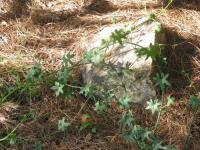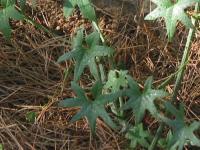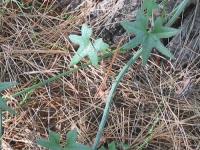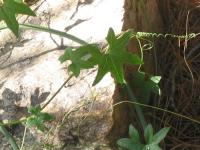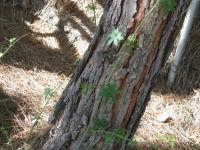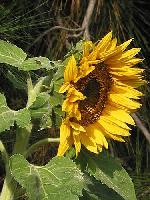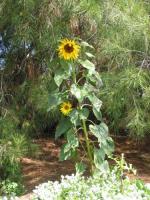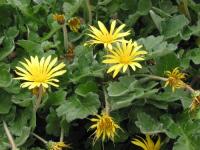You can read my article, “The Interdependent Language of Tarot,” in this month’s Newsletter issue #77 of the Association for Tarot Studies.
Recent writing
World Tarot Day
No, you haven’t landed on the wrong blog. Though I usually only post about Tarot on my other blog, Spirit Blooms, in honor of World Tarot Day, I’d like to share my love of Tarot a bit more broadly, and also to honor some of the people of Tarot, including writers and artists that I think are rather special. So here it is, more than you ever thought you wanted to know about Tarot. At the same time I hope to dispel some misconceptions.
By the way, I understand that today is also World Towel Day for Arthur Dent fans (The Hitchhiker’s Guide to the Galaxy).
Tarot Writers and Artists
First, I want to introduce you to the blogs of two women and one man who’ve contributed a great deal to the study of Tarot, for me personally and for a lot of others. Mary K. Greer is the author of Tarot For Your Self and The Complete Book of Tarot Reversals, along with many other insightful books on Tarot. Rachel Pollack is an award-winning novelist as well as author of numerous books on Tarot and the Kabbalah, including Seventy-Eight Degrees of Wisdom, The Forest of Souls, and a pair of detailed companion books for the Haindl Tarot created by Hermann Haindl. Ms. Pollack also created the Shining Tribe Tarot.
In addition to those who write books about Tarot are a number of people who write articles, publish newsletters, review Tarot decks and books, and operate online forums. Then there are the deck creators who continue to color the lives of Tarot lovers with new and fascinating decks, beautiful images, and deep symbolism. James Wanless, Ph.D., or Captain Pick A Card (notice I’m linking to two different blogs here), is the creator of the Voyager Tarot, which is the first Tarot I owned and learned with, back in the late 80s. It’s a photo collage deck, and it still resonates for me in its beauty and usefulness.
Some of the most innovative modern Tarot decks include Mark McElroy’s Bright Idea Deck, and Emily Carding’s Transparent Tarot. While my preference is for a more traditional look and feel to Tarot, it’s decks like these that bring Tarot to people who never considered it before, and have helped carry it into the 21st century.
Sometimes an established artist decides to create a Tarot deck. Hermann Haindl is a great example of an artist who is also knowledgeable about Tarot, and I find his Haindl Tarot to be phenomenal. Artist decks are sometimes disappointments, either because the artists haven’t studied Tarot in depth, don’t have the right feeling for it, or because some aspect we expect of Tarot is missing. It’s not enough for a Tarot to just have pretty pictures or a novel theme. The best art-based decks are fabulous for reading, as is Elisabetta Trevisan’s deck, the Crystal Tarots.
History and Structure
Tarot is a centuries old phenomenon, the earliest European decks having appeared by the 15th century. No one really knows its origin, or its original purpose, but we know that it’s been used both as a deck of playing cards and as a system of divination for hundreds of years. It’s the precursor to our standard modern playing cards.
A Tarot deck is defined primarily by its structure. The deck typically contains 78 cards and includes two parts, a Major Arcana and a Minor Arcana. The Major Arcana contains 22 archetypal images, or Trumps, and the Minor Arcana is more like a deck of ordinary playing cards, with four suits of numbered and Court cards. Whereas a deck of playing cards includes only three face cards in each suit, a Tarot deck has four Courts, traditionally titled Page or Knave (the Jack in a playing card deck), Knight, Queen, and King. The Joker in modern playing cards is derived from the Fool archetype in the Tarot’s Major Arcana.
Three styles of Tarot decks have developed in modern times. Some use only pip cards, with non-scenic illustrations of the given number of suit elements for the numbered Minor Arcana. Others contain scenic illustrations in the Minors, which many people find richer in symbolism and easier to use in readings.
But enough of the technical details and history. I’m positive that if you’re interested in learning more, you’ll find plenty to intrigue you with a simple online search. For more about Tarot history, check out Trionfi.com or Tarotpedia. You can also learn about the history of specific decks at Wikipedia, such as the Rider-Waite-Smith Tarot and the much more ancient Tarot de Marseille.
The Art of Tarot
The draw for many people who love Tarot is the artwork. Some collectors don’t read with the cards at all. I won’t post any images here, for reasons of copyright. But I’ll provide a link or two to get you started at sites where samples of both ancient and modern decks can be viewed.
Golden Tarot by Kat Black (Use links at left to view the Majors, Coins, Cups, Swords, Wands.)
Tarot of Transformation by Jasmin Cori and Willow Arlenea is “an innovative deck by two psychotherapists offering an integrated and embodied spirituality.”
If you want to spend about two full days browsing samples of Tarot decks, you might want to try Aeclectic Tarot. This site also links to the Aeclectic Tarot Forum, one of the biggest and best places on the Internet to learn about and discuss Tarot, thanks to its most generous hostess, Solandia.
Last but not least, the German site Albideuter.de
compares the same cards from a staggering number of different Tarot decks.
Uses of Tarot
Tarot is most useful for gaining valuable insight into our lives, which is something that can’t be measured except through the experiences of those who use it or benefit from it. I don’t typically set out to use Tarot to predict the future, though there are times when it does that anyway, a mystery I won’t go into here in any depth, because frankly I can’t explain it. If someone is interested in how Tarot might do that, or how any kind of psychic ability or extra-sensory perception works, there are many theories, ranging from spiritual beliefs to quantum physics, and there are scientific studies going on all the time. Carl Jung experienced events that he classified as ESP, and as a scientist he thought the subject deserved further study. He also coined the term Synchronicity, or “meaningful coincidence,” which is what a lot of students of Tarot, including me, tend to think is at least partially behind how Tarot works.
If you’re interested in following some of the latest research into psychic and other related phenomena, you might want to check out these links:
Institute of Noetic Sciences
American Society for Psychical Research
Consciousness Research Laboratory
The Veritas Research Project, University of Arizona
I find that my personal use of Tarot helps me most with insight, helping me to understand what’s going on in my life — especially inside my own psyche. It sometimes helps me make decisions by pointing out options or perspectives that I hadn’t thought of on my own, and it helps me by pointing out where I have either deluded myself about something or I have a lot of unconscious stuff going on that I need to be more aware of. I’ve also at times used it as a tool for meditation. Some psychologists and therapists use Tarot in their practices to help clients understand their projections, archetypes at work in their lives, and other unconscious issues. Sometimes an image is much better than words at bringing unconscious material into the open or into greater clarity. Tarot could be compared to dreams in its symbolism, and to literature in how it provides a metaphor for typical situations and processes that all humans experience.
I’ve used Tarot to spark my creativity, either to inspire the topic of an essay or to help me work out plotting puzzles in my fiction. The solution to the mystery in Snow Angels came almost entirely from a series of Tarot readings. I’ve read of other Tarot users who also find Tarot helpful in their creative work.
Additionally, Tarot is used, mostly in Europe, to play a card game known as Tarock, Trionfi, or Tarocchi (more instructions here). I’ve never played this game, and the instructions look complex to me. (I grew up playing Canasta and Cribbage.) My understanding is that it’s something like Bridge.
I discovered my love of Tarot more than 20 years ago, and to this day it remains my favorite mystery.
Happy World Tarot Day!
I know there’s something good happening out there
I’ve been in a horribly bad mood, mainly due to family troubles of the kind that make me feel helpless and small — the news of the death of my oldest brother, and my dad’s loss of independence due to a stroke. I’ve also had some just silly bad luck at home, little things like stubbing a toe so hard a few days ago that I worried it was broken (it’s still sore), straining my back lifting a bag of cat litter yesterday, frustration over the economic crunch that everyone is feeling, when I really could use a newer more reliable car. Why is it that bad news and events seem to come in these overwhelming groupings that feel as if they’ll never end — or, if that isn’t what’s happening, why is it that my mind seems to make even the small problems feel big, once it starts on a downward spiral?
Today I knew I needed to crawl out of this hole I found myself in. I’ve been avoiding the news, because that usually just makes me feel worse, and worse was definitely not what I needed. I know some people think that’s an unrealistic attitude, but I find the news unrealistic, in its focus on everything bad and very little good except nonsensical news about the personal lives of celebrities — people who would likely just as soon be left alone when it comes to personal matters.
I decided to search for some positive news on the Internet, and I found this story on a blog called Great Pet Net that I thought I should share in case anyone else could use a lift: Jasmine the Mother Theresa Greyhound. Dogs tend to have a healing way about them, all around, in my opinion. But this one is exceptional. She certainly had a distant healing effect on me.
It’s a beautiful spring day here. Flowers are blooming, in spite of the gopher that keeps eating them. (Our gopher loves California poppies and nasturtiums. What does yours like?) The The Hooded Orioles arrived early from Mexico, and one almost flew right into me yesterday, maybe because I was wearing green and blended with the plants. Later I watched three Red-tailed Hawks circle the sky above our house. Clouds sail across the sky today in a stiff, delicious ocean breeze. My cat Tara is always up for a game of chase or a tumble with toys. Someone I care about is playing Bach on the piano in the next room.
Yesterday I spotted a long, sinuous cloud in the western sky that looked like a Japanese dragon. I didn’t get a picture, but if you’re familiar with the animated film, Spirited Away, it looked a lot like Haku in his natural form as a river spirit.
Now that I’ve set my mind back in its more customary direction, at least for the moment, good things are beginning to happen inside me again, too.
Every now and then I find it necessary to keep a gratitude journal, to find at least three things each day that I’m grateful for to write about. I think I’ll take up that practice again for a while.
Watch the skies for Comet Lulin
It’s a hazy, cloudy day here today, so I don’t hold out much hope, but in some places tonight will be the best night to see the comet Lulin:
Green Comet Approaches Earth
Comet Lulin making nearest approach toward earth, one-time only
What’s the appropriate response to this?
I received a link to this news article in an email:
Melbourne writer jailed for insulting Thai royals
“FOR writing three ill-conceived sentences in a novel that sold fewer than 10 copies, Melbourne man Harry Nicolaides was yesterday sentenced to three years in a Thai prison.” (click to read entire news story)
Consider what would result in the world if everyone reacted to a perceived insult in this manner.
Imagine the silencing effect.
Even more disturbing, in another article on this topic — Thailand sentences writer for insults — it seems clear that this is probably a case of a writer getting caught in the middle of political maneuvering that has nothing much to do with insulting the royal family or with three sentences in the writer’s self-published work of fiction that only sold 10 copies. It has much more to do with someone else’s power play, or their fears about what will happen when the current Thai monarch dies.
Still it’s enough to make every writer in the world think hard about what freedom is and how much freedom of expression he or she really has. And on the Internet, we’re all writers.
Plane crash
It was much smaller in scale, in terms of lives lost, but the F/A-18 crash in University City yesterday brought to my mind another crash, while I watched the news on TV yesterday, horrified — the crash in North Park in 1978, when a Cessna collided mid-air with PSA Flight 182. Both happened in residential neighborhoods, and there were many witnesses, including this amazing account by a mail carrier, to both planes going down right over homes. No one who lived in San Diego at the time could forget that other crash 30 years ago, and the one yesterday touched many people deeply as well.
My heart goes out to the family and friends of the four who died yesterday, a mother, grandmother, and two baby girls, as well as to those who’ve lost homes or sustained other damage, to the neighbors and students at nearby schools traumatized by the incident, to the pilot, and to all the rescue/emergency workers who responded. It could’ve been much worse, but that doesn’t change or lessen the impact of this tragedy on so many lives.
Gardening habit or gardening revolution?
Mystery author Eric Mayer* mentioned in a recent blog post that his blog journaling hasn’t been very habitual of late. He went on to write about habits, and that got me to thinking about my habits, and how they’ve changed in the past year or so. Obviously, for me, blogging has taken a back seat to other things. So has my fiction writing, other than attempting to sell my latest finished manuscript, a mystery about a tarot reader whose awakening ability as a medium gets her involved in a murder investigation. (Interested agents or publishers are welcome to inquire here.)
Habits can be good or bad, and I’m sure everyone has some bad ones they’d like to unload. But one new habit I’m happy to have taken on this year is gardening.
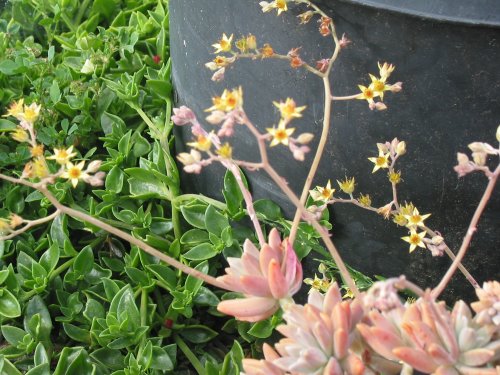
Gardening is indeed a habit, one that gets into your blood in a way I didn’t anticipate when I started out this year. I’d done a tiny bit of gardening as a kid, when I remember planting one rose bush of my own but mostly helping my grandmother with her strawberries and vegetables on the embankment behind my parents’ house. Later, in my first apartment, I nurtured a few houseplants, and throughout my work life I’ve usually kept a potted plant on my desk. I kept African Violets in a north facing window in the last house we rented, until a cat took over that window sill. Still, my husband did most of the outdoor gardening, with a little weeding here and there on my part, until March of this year.
It started this spring with tending a few vegetable and flower seeds until they sprouted, and then the seedlings until they went into the ground. From there I progressed to caring for plants in the ground and preparing the soil for more of them. It’s rapidly expanding to a succession of all of these things, in the hopes of keeping some fresh produce in our salad and veggie bowls through this summer, as well as brightening a corner of the front yard, where my ultimate goal is to keep flowers blooming in a little cottage style bed year round. I’m a ways from that goal yet.
I’m still new at this, and I got a late start this year, but I get help and advice from various sources, and gardening is now a firm habit that I won’t easily give up. It’s one of the first things I think about in the morning and one of the last I think about before the sun goes down.
The plants seem happy about my gardening habit, when they can figure out what season it is. Our weather this spring switched back and forth for a couple of months from one extreme to the other, first dry Santa Anas with temperatures in the 90s, and then thick cloud cover and a shifting Jet Stream chilled the air to the 50s. This went back and forth for weeks, with little pleasant weather in between, and it kept our plants confused. In the past two weeks the weather has leveled off, and the plants are loving it.
They say beauty is in the eyes of the beholder, and I’ve recently realized there’s little more beautiful to me than a tiny plant bursting out of its seed container. Call me crazy, but I think baby plants can be almost as cute as a kitten, and they, like the kitten, draw out my mothering tendencies.
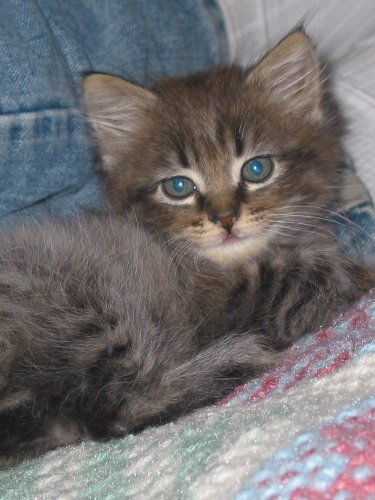
(I’ll bet you expected a photo of a seedling, but I couldn’t help the obligatory kitten shot.)
To some this pleasure might seem like taking joy in watching paint dry, but to me it’s more like watching a sunset at the end of a heat wave.
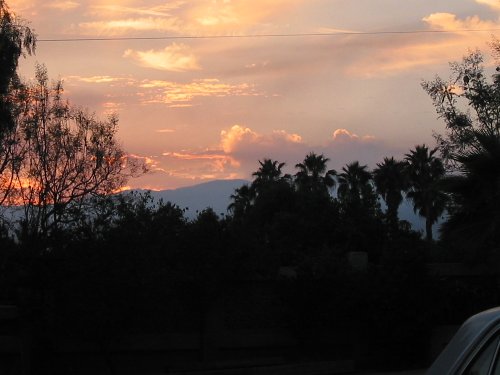
We celebrated our first avocado blooms a few months ago.

Now some fruit has set, which we hope will grow to maturity.
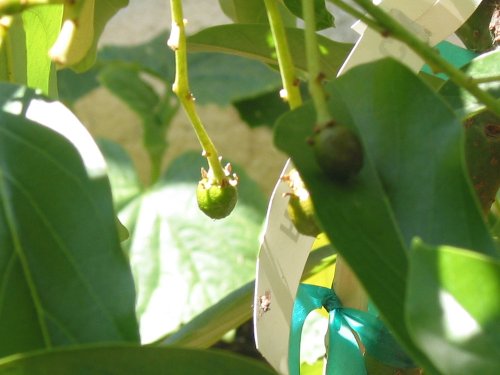
Avocados, according to my resident expert Ken who’s read something like 200 online agricultural reports about them, tend to drop a good portion of their fruit early, which can be disappointing to home gardeners. It will be disappointing to me, if it happens, because Reeds are my absolute favorite avocado variety.
Two days ago I celebrated my first squash blossom.
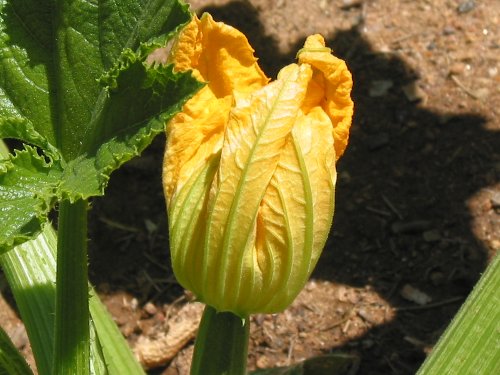
Zucchini may seem an ordinary thing to seasoned gardeners. It’s one of the easiest things to grow and the butt of gardening jokes, usually in reference to an overabundance of it. But I like zucchini, I love my resplendent squash plants with their huge green leaves, and those yellow-orange blossoms are gold to me.
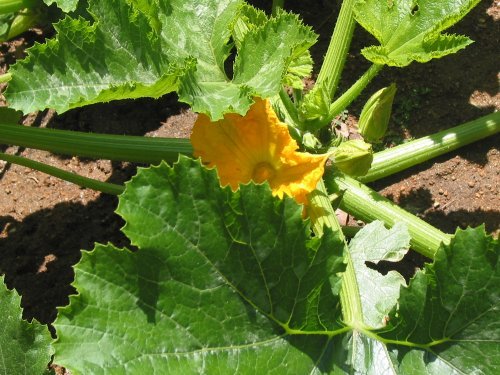
I’m learning more about the various weeds that grow in the garden, some of which are edible. For instance, purslane and dandelion make delicious salad greens. Note, if you decide to try eating weeds from your garden, be careful that you know what you’re eating. Ensure that the plants haven’t been subjected to herbicides or pesticides and that they aren’t in fact toxic weeds.
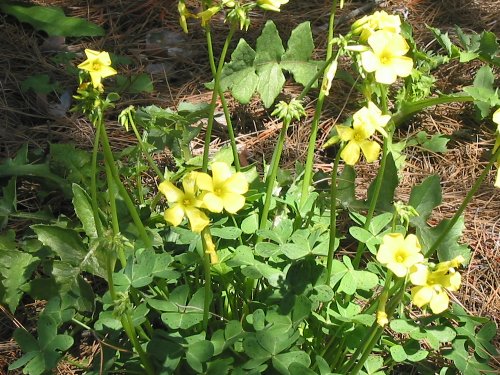
Even some semi-edible weeds, like the sour grass we all discovered as kids, can be a problem if eaten in quantity, I’m told, and purslane looks very similar to a toxic type of spurge that often grows right alongside it. Have an expert show you how to identify edible weeds, and examine carefully whatever you pick to eat. This point was driven home to me when I found spurge, with its milky sap, growing in my own little purslane patch.
Yesterday Ken pointed me to a Los Angeles Times article about Guerrilla Gardeners, which linked to a slide show on how to make “seed bombs” as well as two blogs, here and here, about guerrilla gardening.
Gardening has not only revolutionized my daily routine. It’s apparently a revolution that’s spreading once again, as Victory Gardens did in the last century, with people today gardening to save money on local food and working on a clandestine volunteer basis to re-green the land.
_ _ _
* In case you aren’t aware, Eric Mayer and Mary Reed’s latest John the Eunuch Byzantine mystery, Seven For A Secret, was released in April by Poisoned Pen Press. If you haven’t kept up with their historical mystery series, it’s not too late to start. The earlier books in the series are still in print, and some are now available as Kindle editions.
Still winter
It turns out that this Snow on Mt. Palomar, back on December 9, 2007, was nothin’.
But you couldn’t have told me that three days ago, when our high temperature was about 80 degrees Fahrenheit, and I was certain spring had sprung with a summery vengeance. I almost tucked away my warm clothes and pulled out my summer shorts.
There was no more snow on Mt. Palomar. It had all melted since around Feb 5th, when the mountain didn’t boast nearly as much snow as in early December. I did get a nice view of the entire mountain with snow on it, from our polling place on the 5th. But I didn’t have my camera with me, so this view was from our yard. As you can see, it wasn’t as much as in December.
FEB 5

And like I said, by three days ago that was gone, melted. History.
But I’m glad I never got around to putting away my sweaters, because yesterday I don’t think the outside temperature ever rose above 50 degrees, and although the forecast had called for a light drizzle overnight, instead we got dark, threatening skies, cold wind, and steady rain for several hours yesterday.
I was sure that once the clouds parted there would be a fresh layer of snow on the mountains. But when they did, I couldn’t believe what I saw. Here’s our view just as the clouds lifted yesterday afternoon.
CLOUDS LIFTING
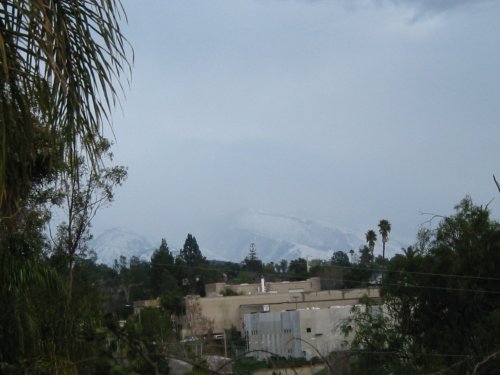

Below shows our view from our side yard at just around sunset yesterday, when the snow reflected the setting sun.
SUNSET
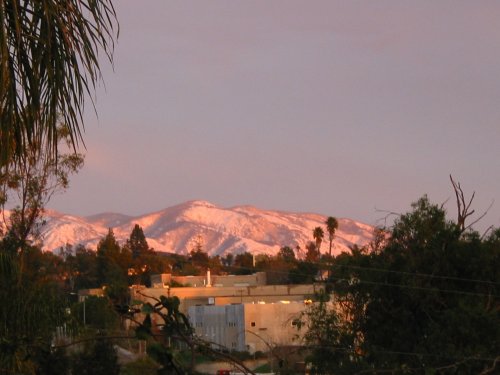
We can only see the lower, southern peak from our side yard, and that’s possible only in the past few months since we removed some obstacles. Below is a view of the entire mountain, from the vacant lot two houses down the hill, this morning. I’ve circled the portion visible from our yard in the second view below.
ENTIRE MT. PALOMAR VIEWED FROM DOWN THE HILL

ENTIRE MTN WITH SOUTH PEAK VISIBLE FROM OUR YARD CIRCLED
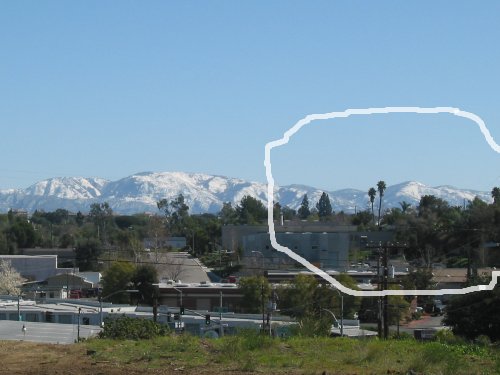
I don’t mind a little warm weather, and I don’t mind a little cold or rain. We can always use more rain around here, and snow is beautiful from a distance, but this snow looks more like Washington, Idaho, or Sierra snow than Southern California snow. Okay, maybe it’s like Big Bear snow. But it’s not normal San Diego County snow. We had roads close near Campo yesterday, which is near the Mexican border! Is it possible the entire region shifted north and we didn’t know it? It’s confusing, and I guess it’s time to dress in layers for a few weeks.
What the news people have to say:
A wintry surprise for area: Snow, sleet, hail, rain turn nice weather upside down
‘Slider’ brings rain around county, snow in moutains.
See what happens around here when it snows? People get stranded, roads close. Just a little snow can set us upside down and sideways. It’s not supposed to snow here.
But it sure looks pretty.
MORE PICS

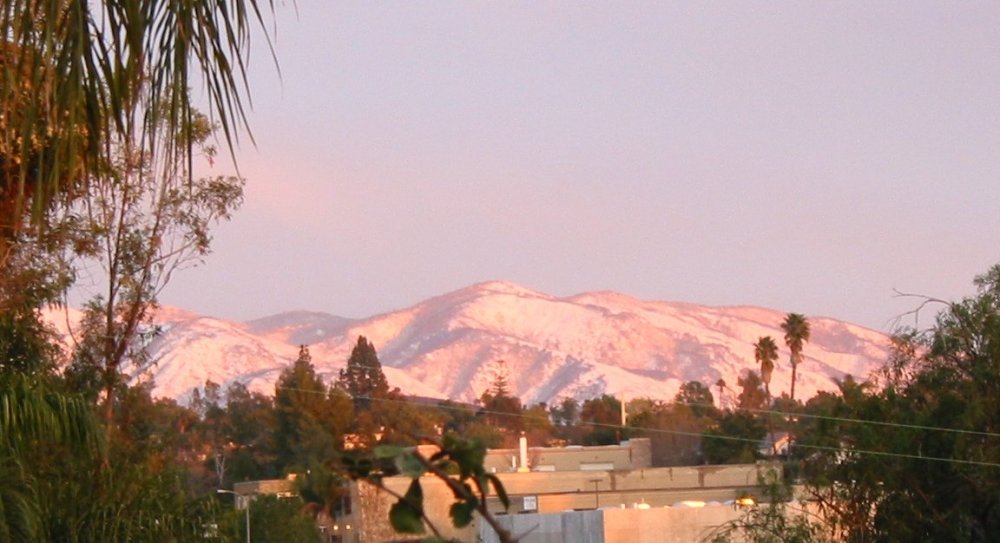
Early spring, or not? And what is this vine?
In a couple of weeks, groundhogs will make their yearly predictions, though I’m not sure a prairie dweller afraid of its own shadow is a very reliable sign of the turning seasons. I’ve begun to wonder if we’ll have an early spring, though. The weather has turned sunny and warm, and we haven’t needed an extra blanket for the past few nights.
Weeds have cropped up all over our yard, making everything green, even if it isn’t the commonly acceptable form of green. When the weeds first sprouted they were beautiful, and in some open, flat parts of the yard, from a distance you would almost think we had a lawn. We don’t, and now that they’re larger, from a distance they just look like a bunch of weeds.
We found something new and interesting under the pine trees. It was a strange vine, not anything I recognized, but vaguely reminiscent of a Cucumber, or maybe some variety of Passionflower. (Click photos for larger views.)
It had grown a lot by the time we noticed it, and was on its way to spreading all over that section of the yard, sending out long, tightly curled tendrils that took hold of whatever was in their reach.
It had already started up one pine tree.
I looked it up on the internet and didn’t find anything conclusive, at least not at first. Nope, not a garden-variety Cucumber, and thank goodness it doesn’t appear to be a Kudzu Vine. It wasn’t a Mandrake, which sort of disappointed me, as a fan of Harry Potter movies, though I don’t particularly want a plant that will scream at me.
Possibilities came and went as I searched for vines with multiple-lobed leaves, even the possibility that it was some kind of wild grape, which it wasn’t. One type of vine that seemed to come close was the Bitter Melon, also known as Balsam Apple or Balsam Pear. That narrowed my search to various forms of gourd or Cucurbitaceae, such as Hodgsonia, or Luffa, or the much more likely Chayote, which is sold in our local markets. But the leaves weren’t right for Chayote. The strongest possibility I’ve come up with so far is some variety of Coyote Melon or Coyote Gourd, which grows wild in our region.
If you know for certain what this vine is, please let me know.
How it got there is the easy part of this mystery, and would be even if I’d never seen a house finch scatter seeds. Our local scrub jay friends are always hiding things in the needles that collect under our pine trees. It’s a favorite place to store their seeds, nuts, magic beans, and whatever else they hoard for later, usually scrub oak acorns, or peanuts people have fed them. Last summer, while we trimmed the pine trees and cleared out a thick mulch of pine needles, one scrub jay kept fussing over our activity, and every now and then he darted in to rescue some of his treasures. In some years we’ve had volunteer sunflowers sprout there and grow to full height.
NOTE: The pictures that follow are from past summers, not this winter. Even here, we don’t ever see sunflowers blooming in January.
Out front, we have an entire patch of some kind of creeping yellow daisy that came up there one year, probably also carried in by birds. We water it now and then, so although it dies back each winter, it returns to open a bright patch of yellow flowers every summer, next to our old pickup.
In any case, the strange vine has been eradicated, so we won’t have any cries of “Feed me, Seymour!” coming from under the pine trees, and it won’t grow so large as to strangle a pine tree. Jack won’t have to climb up the beanstalk and see if there’s a giant living up there. Good thing, too, because no one named Jack lives here, so we’d have to pay Jack to do that. Still, I hope we didn’t kill something we would’ve liked. Sometimes the birds bring us weeds, and sometimes they bring us gifts that we enjoy for years.
Maybe we will have an early spring, maybe not. I’m in no hurry. I certainly don’t look forward to the hottest part of summer. But a long spring would be nice.
Snow
We got quite a bit of much-needed rain last weekend. This week’s storm didn’t bring as much where I live. I think the storm dumped most of its moisture on Oregon long before its tail end reached us. But yesterday afternoon, clouds moved in from the west again.
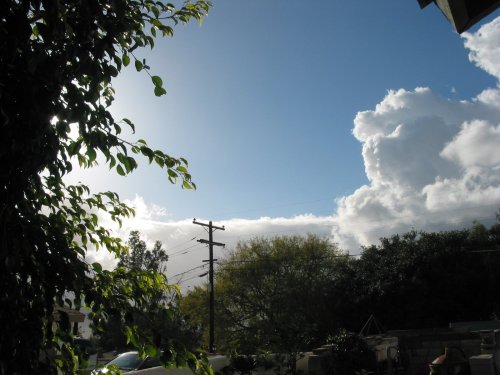
I was sure this one meant business. (more…)
Snow Angels
Administration
General Information
Navigation
Category Cloud
Word Cloud

Shadows Fall
Recent Comments
- anonymous: it was a good story
- Catherine: What a beautiful cat! I
- amy: i like it very much
- Janice Pence: I love this article.
- Reenie: Encore! Encore!
- anonymous: It is funny I happened
- Sarah: She has really become a
- Eric Mayer: Funny. Are her paws on
- Ken: Shades of Zez Confrey.
- Barbara: Anonymous --- I'm glad you
Recently Commented Articles
- Snow Angels: 221 Comments
- Move over piano man: 7 Comments
- Extrovert or introvert?: 32 Comments
- Which is smarter?: 7 Comments
- Office Cat: 7 Comments
- I know there’s something good happening out there: 8 Comments
Bookmarks
Blogs
- Beverly Jackson
- Beyond the Fields We Know
- Blog Trek
- Cassie-B
- Clear Lake Reflections
- Conscious Junkyard
- Down the Writers Path
- Eric Mayer
- Goddessing
- Grapez
- Greetings from Blogdog
- Herbal Connection
- how to save the world
- Jana’s Journal & Sketchblog
- Kingfisher Cove
- Paula’s House of Toast
- Reenie’s Reach
- Sarah
- Spinning
- violetismycolor
- Zen Knit
Resources for Readers
- Authors’ Blogs
- Best Author Blogs
- Blogging Authors
- Book Talk Radio
- Bookslut
- Campaign for the American Reader
- Cozy Library
- Cozy Mystery List
- First Book
- Goodreads.com
- Mary Reed & Eric Mayer
Resources for Writers
- A Writer’s Edge
- Agent Query
- Blog Your Book to the Top
- Mary Gordon: The Art of Teaching and Writing
- Preditors and Editors
Sites of Interest
- Astronomy Picture of the Day
- InkPot
- Post Secret
- Spirit Blooms - Tarot Readings
- The Art Shack Studio
- Your Yoga Voyage
WordPress Plugins
- Arne Brachhold
- Jerome Lavigne
- Peter Harkins
- Scott Buchanan
- Theron Parlin
- Alexking.org
- Bad Behavior
- Better Feed
- boren.nu
- Bread Crumb Trail Generator
- ChaitGear
- Contact Form
- Customizable Posts
- Edit Comments
- ElasticDog
- Elliot Back
- GaMerZ
- guff
- hitormiss
- Jixor.com
- Live Comment Preview
- Paged Comment Editing
- Paged Comments
- Photo Matt
- Recent Comments
- Related Posts
- Roblog
- Simple Thoughts
- Spam Karma 2
- Weblog Tools Collection
- WordPress Plugin Database
- WordPress Plugins

